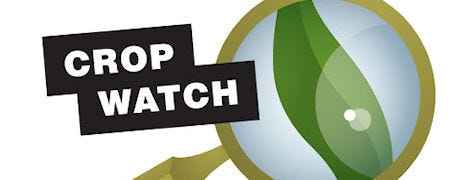
The Crop Watch '14 field has reached black layer, and should be safe from frost. However, it's still high in moisture content. It's too wet yet for reasonable harvest. The last few weeks of the season, anticipating what might be a good crop, can be a tough time mentally as you wait to see how your efforts turn out for the year.
Bob Nielsen, Purdue University Extension corn specialist, says you should continue scouting fields while you wait. This year it may be more important than ever for a couple of reasons, he observes.

Crop Watch 2014: Continue scouting while you wait for corn to dry down to decent level.
First, plants developed extra-long ears compared to most ears. That seems to be true in the Crop Watch field. Favorable growing conditions through pollination and well into grain fill meant ears filled kernels that sometimes don't pollinate or abort, usually those near the tip, if conditions are stressful.
Related: Top Tips For Drying And Storing a Wet Corn Crop
Then diseases and nitrogen deficiency began taking out some fields late in August. The Crop Watch field held with good plant health longer than most, especially if you're looking at the important part of the plant at this time of year – the upper leaves from the ear leaf up.
For plants that did run out of photosynthetic factory because disease or N deficiency caused deterioration of leaves, the kernels were still screaming for starch, and there were lots of them, Nielsen says.
The plan's reaction is to try to meet those needs by pulling starch out of the plants, usually the stalk, and sending it to the ear. This usually continues until the kernels form a black layer at physiological maturity.
Related: 6 Stories to Read Right Now: Big Crops, Little Storage
Will plants stand? The biggest question now and best reason to keep scouting is to know which fields might be prone to lodging.
The bottom line is that these plants may be more subject to lodging and stalk rots than usual, Nielsen says. If you scout you will know which fields you should harvest first.
You will also want to watch for ear molds. Nielsen doesn't expect anything like occurred in the eastern Corn Belt in 2009, with a very late harvest and severe ear mold issues that became moldy corn issues in storage with mycotoxins to boot, but he thinks it's worth watching.
Again, quick harvest and immediate drydown to 15% moisture or less is the best alternative in that case.
About the Author(s)
You May Also Like




